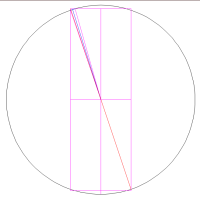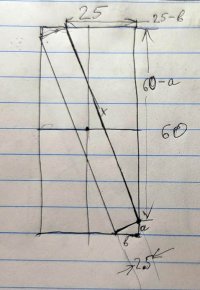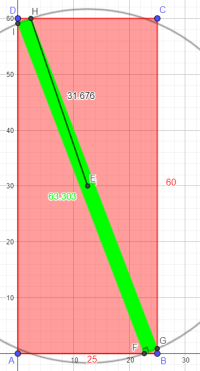So here's my challenge - I have a rectangular opening that needs the longest possible square strut installed.
Contextually, I understand the geometry, but I am missing one important element - the radius of my circle.
Here goes - my opening is 60" vertical x 25" horizontal. My strut is 2.5" wide and cut square (no miters for fit) at both ends.
The way for me to solve this is to place a circle with its center-point at the "middle" of my opening where a chord that intersects the edges of my opening is 2.5".
All the geometry falls in place from there and, logically, a defined box (60"x25") can only have one circle with center in the middle and a 2.5" cord at the corners - but how to find that radius?? I'm stumped. Thanks for any insights!!

Contextually, I understand the geometry, but I am missing one important element - the radius of my circle.
Here goes - my opening is 60" vertical x 25" horizontal. My strut is 2.5" wide and cut square (no miters for fit) at both ends.
The way for me to solve this is to place a circle with its center-point at the "middle" of my opening where a chord that intersects the edges of my opening is 2.5".
All the geometry falls in place from there and, logically, a defined box (60"x25") can only have one circle with center in the middle and a 2.5" cord at the corners - but how to find that radius?? I'm stumped. Thanks for any insights!!



